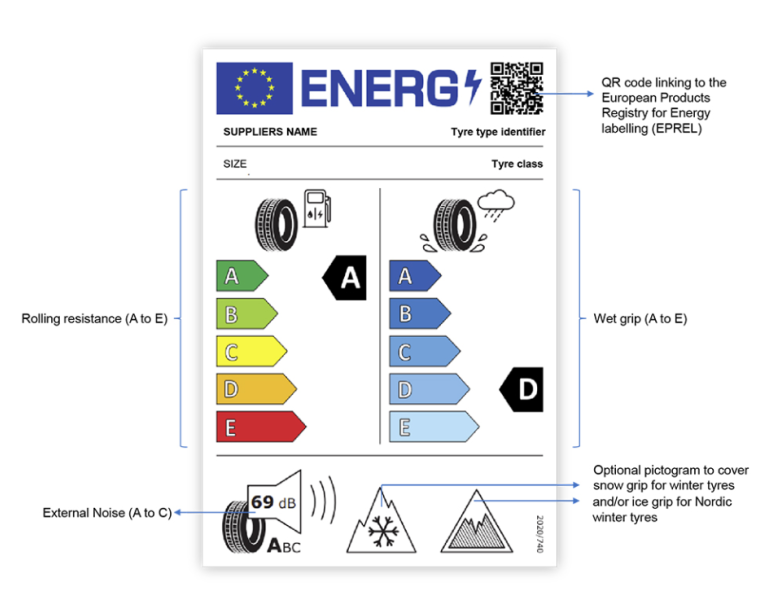Tyre labelling
Tyres account for 20% to 30% of a vehicle's fuel consumption. Choosing energy efficient tyres results in significant fuel cost savings.
Tyre labelling
Tyre labels help you to make energy-saving decisions without compromising safety and the environment. The labels provide information on the rolling resistance, wet grip and external rolling noise of a tyre. Take a closer look at the label example below and watch our learning video for all the information you need to know.
Fuel efficient motoring tips
Maintenance
Service your car regularly
This can help to optimise engine efficiency and reduce fuel consumption.
Check your tyre pressure
Check your tyre pressure at least once a month and before long journeys. Under-inflated tyres will increase your fuel consumption and are more prone to a blowout.
Before your journey
Plan your journey
Plan your journey and leave enough time - getting lost increases journey length and not leaving enough time for your journey encourages speeding. Both lead to increased fuel consumption.
Save weight
Unnecessary extra weight means extra fuel consumption so if you don't need it, don't bring it.
Minimise drag
Roof racks and boxes increase drag - if you don't need them at the moment, take them off to increase fuel economy.
Walk or cycle instead
If you are only taking a short journey, consider walking or cycling.
During your journey
Drive smoothly
Driving at a moderate speed and keeping your eye on the road ahead helps to reduce unnecessary braking and acceleration, which increase the amount of fuel you use.
Slow down
Your fuel costs increase the faster you drive, so keep speeds reasonable.
Switch off your engine
Many newer cars automatically turn off when stationary in neutral. If yours doesn't, turn off your engine when you've stopped for a minute or so to save fuel.
Higher gear
Driving at lower revs reduces fuel consumption so change up a gear at around 2,000 RPM.
The power of the label
From household dishwashers to the tyres on your car. This blog explores the often-overlooked world of tyre labels and how they can guide consumers into making informed choices.
Read more